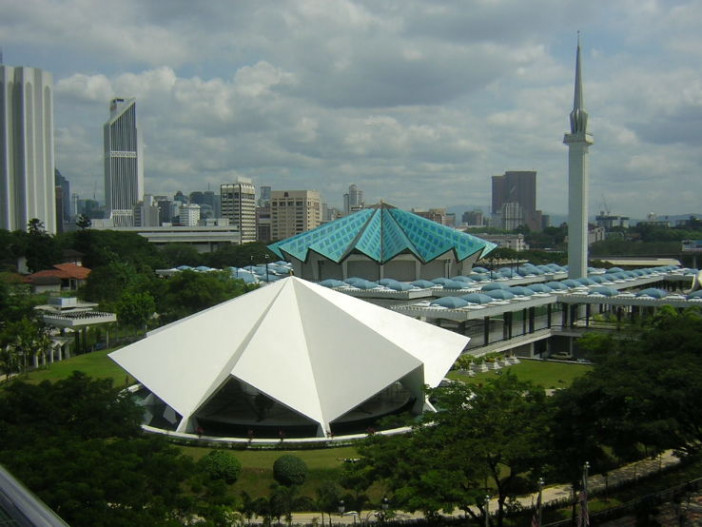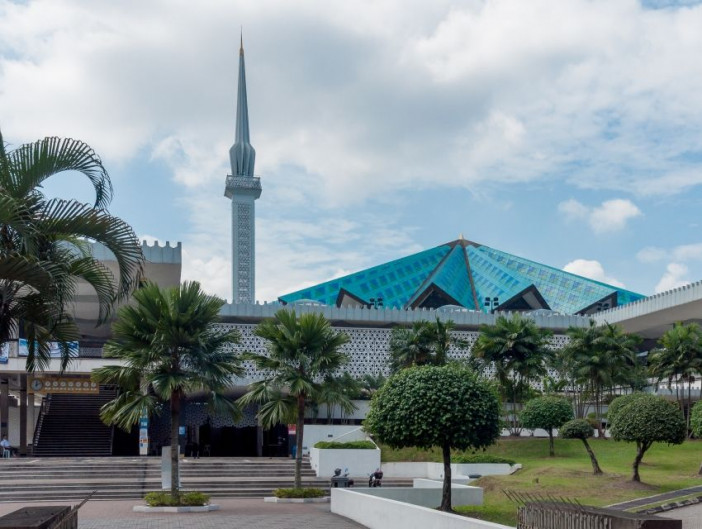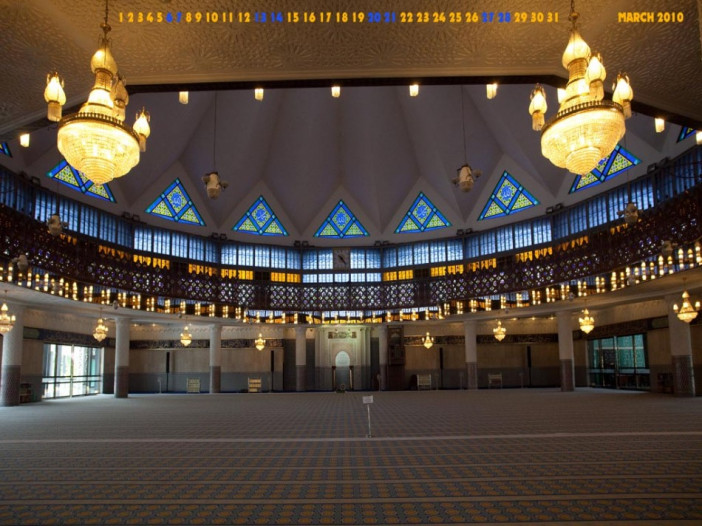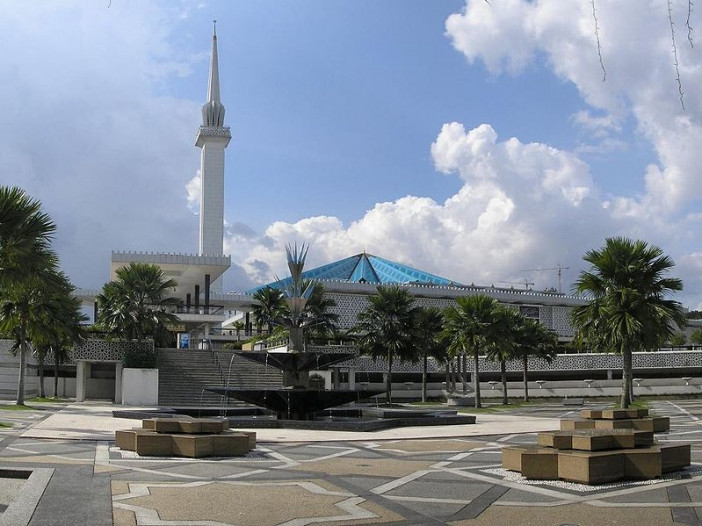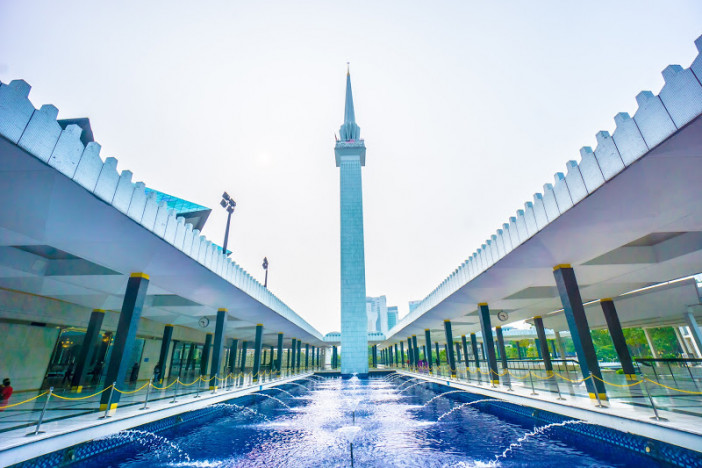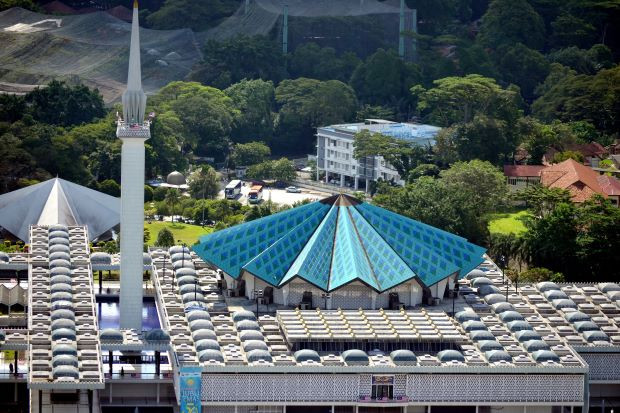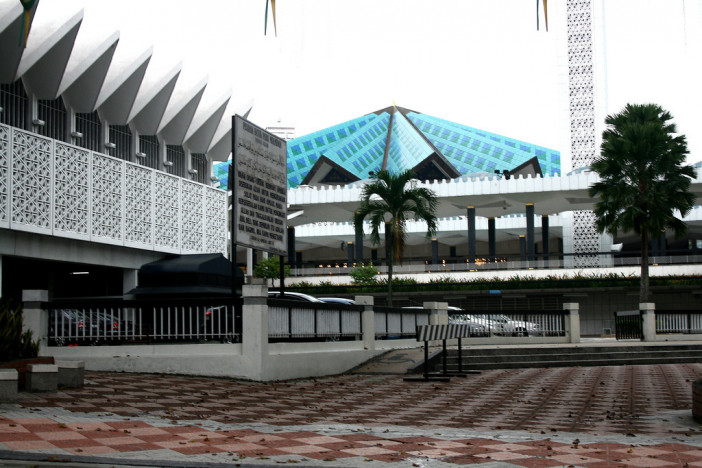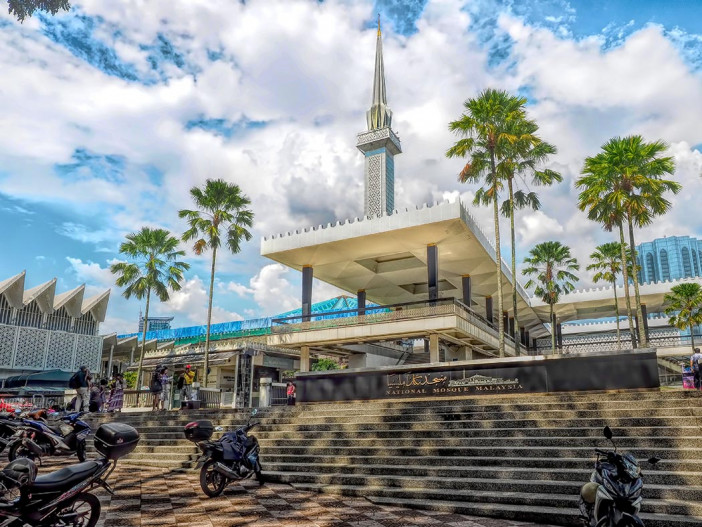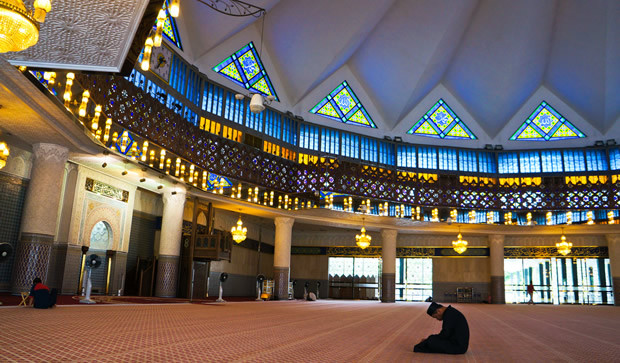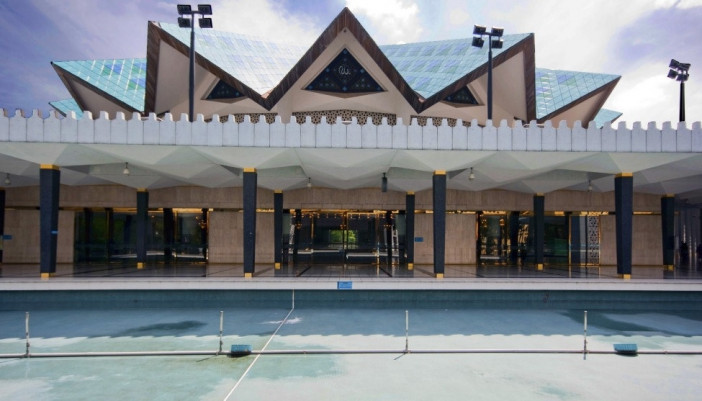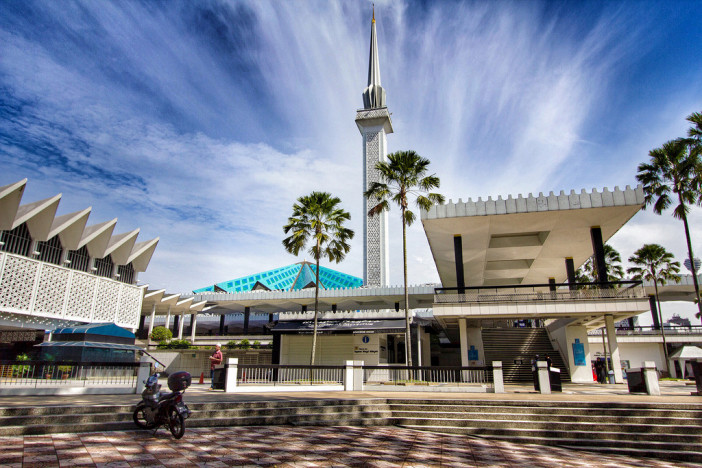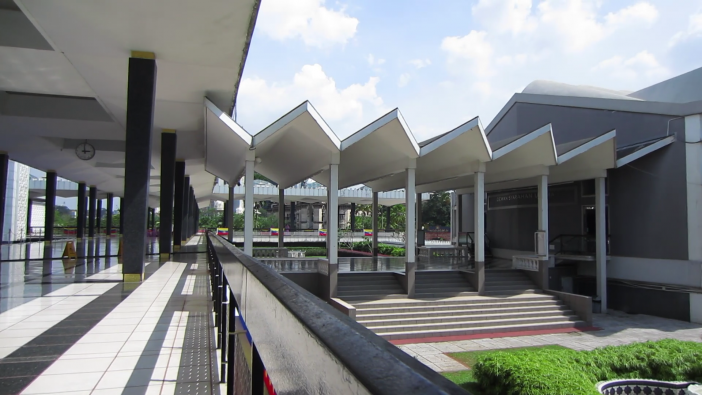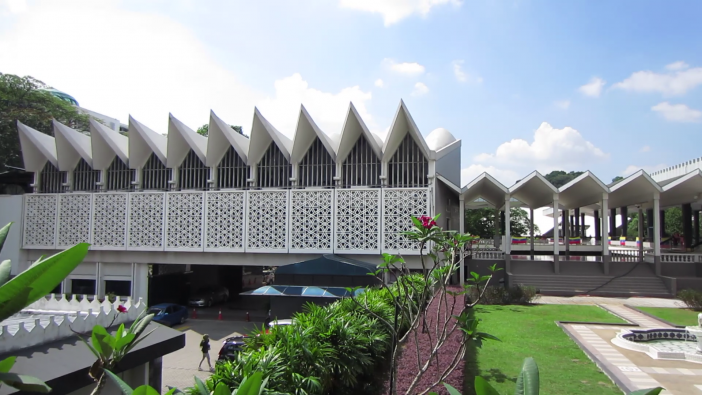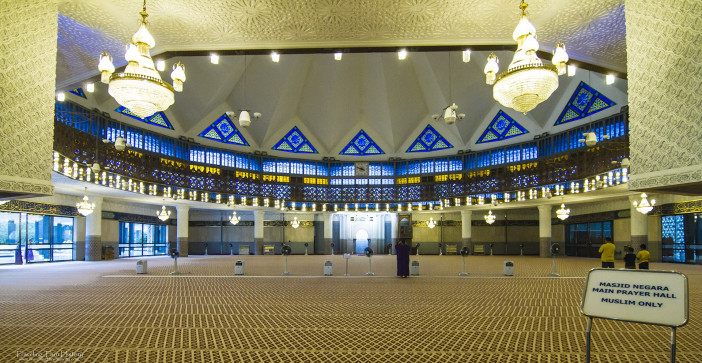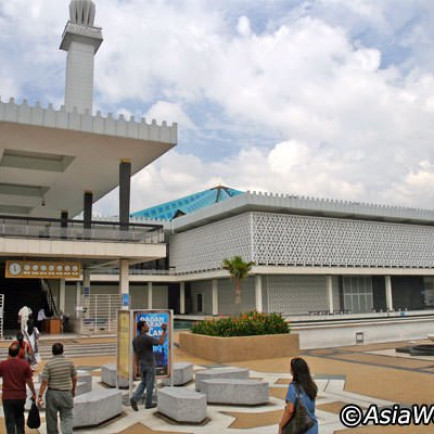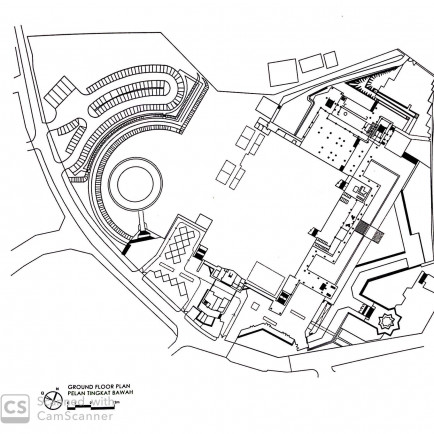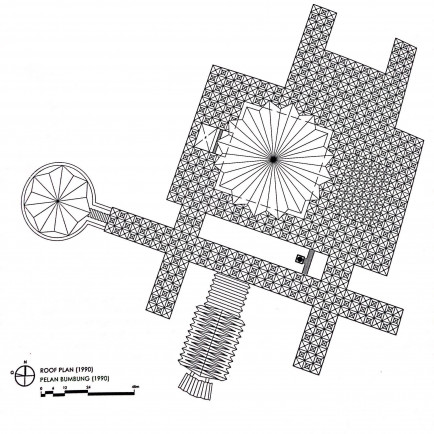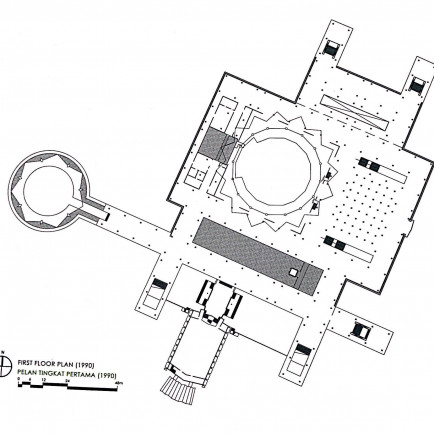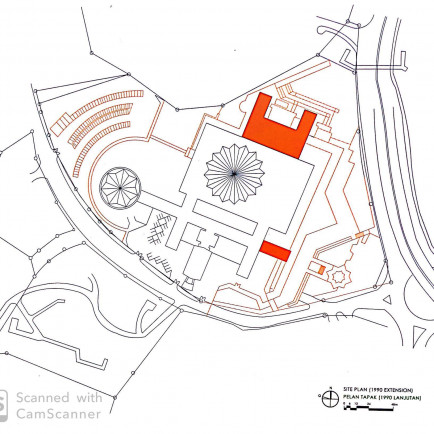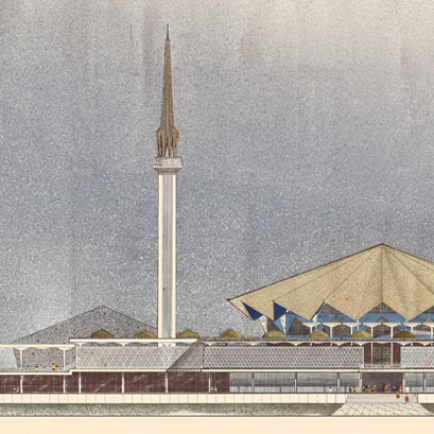Masjid Negara (National Mosque)
History
Masjid Negara is a
national legacy, which built between 1963 and 1965. The idea to build a
national mosque to memorialize Malaysia’s independence was suggested by the
Federal Executive Council a month before independence ceremony. The Chief
Ministers of all eleven states in the-then Federation of Malaya brought up a
proposal to name the mosque after the country’s first Prime Minister, Tunku
Abdul Rahman Putra Al-Haj in March 1958 to recognize his contribution to the
country’s independence. However, Tunku had declined this honour and suggested
that the mosque be named Masjid Negara instead, to symbolize the country’s
unity and multi-cultural harmony, as well as a way to give thanks to Allah for
the country’s peaceful independence – achieved without a single drop of blood
being shed.
History The Mosque’s took about three years for
designing, taking inspiration from the mosque in India, Pakistan, Iran, Turkey,
Saudi Arabia, the UAE and Spain. Its most significant features are its 73-metre
high minaret, which resembles a folded umbrella, and its 16-point concrete
roof’s unique design gives one the impression of standing beneath a gigantic
open umbrella.
In the middle of the roof are engravings of Quranic
verses on aluminium, inspired by Istanbul’s Blue Mosque. The mosque had
undergone major renovations in 1987, replacing the colour of the concrete dome
from pink to a more striking green-and-blue (Islamic Tourism Centre of
Malaysia).
Description
The monumental National
Mosque was built in 1963 to celebrate the independence of Malaysia. It is one
of the largest mosque in Southeast Asia which can accommodate up to 15,000
people. National Mosque was designed by a group of three architects. The
18-pointed star dome represent the 13 states of Malaysia and five pillars of
Islam. The main dome was once pink concrete, underwent a major renovation is
now clad with blue and green tiles. There is only one 75 feet minaret that
sound the call to prayer. National Mosque is located at the heart of the Kuala
Lumpur city.
National Mosque located in a strategic area of Kuala Lumpur. It near to old
Malayan Railway Station , Earth Resource Building, Islamic Arts Museum, Post
Malaysia, Kuala Lumpur Bird Park and Lake Gardens. The mosque was opened in
1965 and named by the first Prime Minister, Malaysia, Tunku Abdul Rahman. He
recommended the name Masjid Negara which reflected importance of the Islam in
Malaysia. It was designed by Malay origin, built by Chinese and Indian.
Besides, donation from Muslims, Buddhists, Hindus, Christians and others. Therefore,
the construction of the mosque also symbolises the spirit of unity and
tolerance.
Today, besides used as a praying place, National mosque used for various academic activities that include official ceremonies, public lectures, seminars, training workshops, conference and so on. Besides, there are many outdoor exhibition areas that can be used for exhibitions around the National Mosque without interrupting the praying process. Plus,the mosque also provides sports facility that can be used by its members to exercise.
Details
Location
National Mosque of Malaysia, Jalan Perdana, Perdana Botanical Gardens, Kuala Lumpur, Federal Territory of Kuala Lumpur, Malaysia
Worshippers
15000
Architect Name
Year of Build
1963-1965
Area
53000 sqm
Drawings
Map
History
Masjid Negara is a
national legacy, which built between 1963 and 1965. The idea to build a
national mosque to memorialize Malaysia’s independence was suggested by the
Federal Executive Council a month before independence ceremony. The Chief
Ministers of all eleven states in the-then Federation of Malaya brought up a
proposal to name the mosque after the country’s first Prime Minister, Tunku
Abdul Rahman Putra Al-Haj in March 1958 to recognize his contribution to the
country’s independence. However, Tunku had declined this honour and suggested
that the mosque be named Masjid Negara instead, to symbolize the country’s
unity and multi-cultural harmony, as well as a way to give thanks to Allah for
the country’s peaceful independence – achieved without a single drop of blood
being shed.
History The Mosque’s took about three years for
designing, taking inspiration from the mosque in India, Pakistan, Iran, Turkey,
Saudi Arabia, the UAE and Spain. Its most significant features are its 73-metre
high minaret, which resembles a folded umbrella, and its 16-point concrete
roof’s unique design gives one the impression of standing beneath a gigantic
open umbrella.
In the middle of the roof are engravings of Quranic
verses on aluminium, inspired by Istanbul’s Blue Mosque. The mosque had
undergone major renovations in 1987, replacing the colour of the concrete dome
from pink to a more striking green-and-blue (Islamic Tourism Centre of
Malaysia).
Description
The monumental National
Mosque was built in 1963 to celebrate the independence of Malaysia. It is one
of the largest mosque in Southeast Asia which can accommodate up to 15,000
people. National Mosque was designed by a group of three architects. The
18-pointed star dome represent the 13 states of Malaysia and five pillars of
Islam. The main dome was once pink concrete, underwent a major renovation is
now clad with blue and green tiles. There is only one 75 feet minaret that
sound the call to prayer. National Mosque is located at the heart of the Kuala
Lumpur city.
National Mosque located in a strategic area of Kuala Lumpur. It near to old
Malayan Railway Station , Earth Resource Building, Islamic Arts Museum, Post
Malaysia, Kuala Lumpur Bird Park and Lake Gardens. The mosque was opened in
1965 and named by the first Prime Minister, Malaysia, Tunku Abdul Rahman. He
recommended the name Masjid Negara which reflected importance of the Islam in
Malaysia. It was designed by Malay origin, built by Chinese and Indian.
Besides, donation from Muslims, Buddhists, Hindus, Christians and others. Therefore,
the construction of the mosque also symbolises the spirit of unity and
tolerance.
Today, besides used as a praying place, National mosque used for various academic activities that include official ceremonies, public lectures, seminars, training workshops, conference and so on. Besides, there are many outdoor exhibition areas that can be used for exhibitions around the National Mosque without interrupting the praying process. Plus,the mosque also provides sports facility that can be used by its members to exercise.


